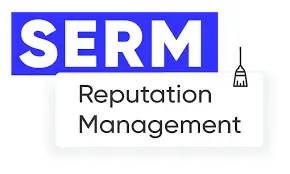A key element of successful online promotion in 2024 is a comprehensive website SEO audit. In today's dynamic search engine environment, requirements are constantly evolving, and therefore, the audit approach must be more comprehensive.
In 2024, in addition to technical aspects, user experience, content quality, and a website's overall online reputation will become increasingly important. An SEO audit should include an analysis of factors such as user experience metrics, page load speed, content relevance, as well as an online reputation assessment and competitive landscape review.
With search engine algorithms constantly changing, the emphasis on quality user experience is becoming more prevalent. As a result of the audit, in addition to technical recommendations, website owners will be provided with a strategic plan covering both technical, content, and marketing aspects for SEO website optimization in accordance with the requirements of 2024.

Why a comprehensive SEO audit is important
Website promotion isn't just about attracting traffic. The primary goal is monetization, generating leads, and increasing revenue. Unsatisfactory visitors often leave, which can lead to lower rankings due to behavioral factors. A comprehensive SEO audit covers all aspects, creating a comprehensive plan for improving your website, maximizing results, and ensuring sustainability in the online environment.
It's important to remember that the audit itself, despite its importance, won't change anything. Results require real changes, and implementing these changes may require additional costs. An audit is essential for developing an action plan and assigning responsibilities and work. Ultimately, a comprehensive audit can create a plan for a period of 3 to 10 months, including the work of developers, marketers, copywriters, and other specialists.
What checks are included in a comprehensive website SEO audit? This process encompasses a wide range of checks, from technical aspects to usability. However, the specific audit elements may vary depending on the type of website. For example, for a high-traffic news portal, identifying growth opportunities is more important than a technical audit. Meanwhile, a young website with growing traffic may face limitations in reaching its potential due to technical issues.
In 2024, a general website audit is a complex mechanism consisting of 10 key components covering various aspects of a web resource's optimization and functionality.
1. Internal or technical audit
A website's technical foundation plays a fundamental role in its promotion. This audit includes checking crawling and indexing settings, ensuring all important pages are accessible to search engines, as well as the correct URL formation, use of microdata, and other technical aspects that impact effective interaction with search engines.
A detailed technical audit of a website also focuses on vulnerabilities related to duplicate content or rel=”canonical” issues. An important stage of the audit is the creation of sitemaps, which ensure correct indexing of pages by search engines.
2. Website performance audit
In light of Google's announcement that it will include page load metrics in its ranking factors, it's important to conduct a website performance audit. Various page load metrics are assessed, with a focus on core factors such as LCP, FID, CLS, and INP. The results provide recommendations for improving key page load metrics.
Explanation:
LCP (Largest Contentful Paint)
Definition: The speed at which the main content of a page loads.
Importance: Ahead of other elements on the page, LCP measures the time it takes for the most important content to fully load.
Recommendations: The auditor provides actionable recommendations to reduce the loading time of key content.
FID (First Input Delay)
Definition: Interaction latency.
Importance: Measures the time elapsed from a user's first interaction with a site until the site responds to that interaction.
Recommendations: Recommendations are provided to reduce interaction wait times, thereby improving user experience.
CLS (Cumulative Layout Shift)
Definition: Cumulative displacement of the layout.
Importance: Measures the degree to which a page's layout changes during loading, which impacts the stability of the interface.
Recommendations: Provides actionable strategies to reduce overall layout drift for a more consistent user experience.
INP (Interaction to Next Paint)
Definition: Delay in interaction.
Significance: Measures the time elapsed from the moment a user interacts with a site until the next page repaint.
Recommendations: Audit provides recommendations to reduce interaction latency by improving the transition between user interactions and page content updates.
3. Content audit
Reaffirming the importance of the "Content is king" principle, a content audit is becoming a critical step in assessing a website's effectiveness. This stage thoroughly examines the optimization of meta tags, text structure, and the content's alignment with user intent. Importantly, it analyzes not only the presence of keywords but also their organic integration into the page context.
Particular attention is paid to the relevance of high-traffic pages to ensure that the information meets visitor needs. The content audit results provide specific recommendations for optimizing existing material, as well as strategies for creating new content tailored to audience needs.
A content audit aims to improve the quality and relevance of materials, which in turn helps improve a website's search rankings and attract its target audience. Furthermore, regularly updating and optimizing content helps a website maintain high search visibility and remain relevant to users, thereby strengthening its market position.
4. External link audit
This stage involves not only analyzing the mosaic of external links from various sources but also taking a deeper look at their role in creating the overall context. This assessment evaluates not only the quality of the links themselves but also the context they create in the virtual space.
An important element of an external link audit is also the analysis of lost links, such as links to deleted pages or broken redirects. This allows you to understand which potentially valuable resources have been lost and how they can be restored or replaced.

The analysis results in a detailed dashboard providing an overview of the entire external link landscape. This dashboard not only displays the current status but also provides strategic recommendations for managing external links. This approach allows you to optimize your website's link building strategy, strengthen its authority in the eyes of search engines, and improve the overall effectiveness of SEO.
5. On-Page Audit
Since users most frequently visit specific pages, landing pages are audited. The structure and content are assessed to ensure each page is as effective as possible.
On-page audit includes
Checking the structure of headings;
Checking for the presence of technical headings;
Page code analysis;
Optimization of images on the page;
Detection of unnecessary elements and other aspects.
6. Competitor Audit: Content and Links
This stage evaluates your competitors' strategies in two aspects: content and external links. The content audit checks
- Texts;
- Assortment;
- Inter-page links;
- SEO structure and other criteria.
External links audit includes
- Collecting data on external links from competitors;
- Analysis of the dynamics of changes;
- Studying linked pages;
- Anchor text analysis;
- Creating a comparison table.
Result: Creation of a comparative table that clearly demonstrates the differences in link strategy, as well as the creation of an action plan for strengthening the link mass of your resource.
7. Online Reputation Audit (SERM Audit)
Customer trust directly impacts your sales. Therefore, it's important to monitor discussions and ratings of your brand on various online platforms.
SERM audit includes
- Highlighting important brand queries;
- Sentiment analysis of reviews;
- Setting up monitoring of reviews about your business.
Result: Providing recommendations for review management, improving search results, and creating a strategy to reduce negative reviews at the top of search results.

8. Usability analysis
A website usability audit aims to identify barriers that prevent users from completing targeted actions, such as transactions, submitting requests, or searching for content.
Usability audit includes
- Visualization of the user's path through the site;
- Analysis of user behavior using services such as Clarity, Hotjar;
- Research of heat maps and scroll maps;
- QA testing of basic user actions and other aspects.
Result: Compilation of a list of identified problems with proposals for their solution and formulation of hypotheses for A/B testing.
9. Data analysis
Tools like Google Search Console contain a wealth of valuable data about your website. This analysis is aimed at extracting actionable insights.
A data analytics audit may include
- Finding the best types of content to increase traffic or conversions;
- Analysis of pages that have lost traffic;
- Exploring missing semantics.
Result: Recommendations for creating, updating or supplementing content.
10. Finding growth points
The main goal of this review is to identify new growth strategies. This analysis is impossible without preliminary steps, which is why it is performed last.
Analysis of possible growth points includes
- Find unused content types;
- Analysis of competitors' performance;
- Research of the internal potential of the site;
- Analysis of keyword potential and other aspects.
Result: Traffic forecasting and suggestions for creating new types of content or optimizing existing ones.
Do you need a comprehensive SEO audit? If you're looking for a magic bullet or a "make it right" button, then probably not. An audit alone won't make a difference. However, if your goal is to increase organic traffic, scale, and are willing to invest effort into improving your website and business, then you certainly do. However, you're still facing difficult work that requires time and resources.
A website SEO audit is a systematic study of a resource to ensure it meets search engine requirements and develops recommendations for improving its promotion.
The result of the audit should be a clear file with recommendations and requirements for improving the site.
An SEO audit includes many stages, such as a technical audit, website performance audit, content audit, external link analysis, on-page audit, competitor audit, online reputation audit, usability audit, analytics review, existing data audit, EEAT audit, commercial factor analysis, and identifying growth opportunities.
The audit itself won't change the situation, but it will provide a 3-10 month action plan that will result in improved website rankings and increased conversions.







